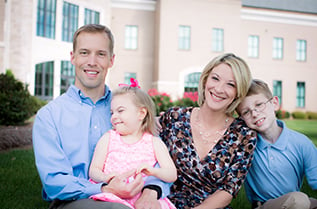This panel of 47 genes is intended for patients with a diagnosis or clinical suspicion of Rhabdomyolysis and Metabolic Myopathies.
8 weeks
81443
$3,000
This panel consists of 47 genes that may be considered in the evaluation of patients with elevated CK levels, muscle cramping and weakness, myoglobinuria, or rhabdomyolysis. The conditions included range in severity and include various forms of disorders of fatty acid and glycogen metabolism, mitochondrial disorders, muscular dystrophies, and others. Myopathic disorders presenting with leg cramps carry a risk of either rhabdomyolysis or progressive muscle weakness and can easily be missed Rhabdomyolysis results from the breakdown of skeletal muscle that may occur from a combination of environmental and genetic factors, and episodes can be triggered by a variety of factors. Initial symptoms may occur following strenuous exercise, infections, fasting, temperature extremes, or exposure to drugs or alcohol, and the signs of rhabdomyolysis include myoglobinuria, or darkened and discolored urine, that could lead to renal failure if left untreated. Some disorders that place individuals at risk for rhabdomyolysis are characterized by a "second-wind" phenomenon where initial exercise intolerance is overcome after a short period of rest. Susceptibility to malignant hyperthermia may also present with evidence of muscle breakdown after exposure to certain anesthetics, and this condition can be life-threatening without prompt recognition and treatment. List of Genes and Associated Clinical Phenotypes
For patients with a specific suspected disorder, individual gene sequencing should be considered first. Molecular testing is useful to confirm the diagnosis and to identify the disease causing mutations within a family to allow for carrier testing and prenatal diagnosis.
Next Generation Sequencing
The current design of this panel covers all genes and the flanking intronic sequences. This method allows for analysis of greater than 98% of the targeted sequence for the detection of nucleotide substitutions and small deletions and duplications. Large deletions and duplications will not be detected by this panel. Mutations and variants identified on the panel are confirmed with Sanger sequencing. All novel and apparently pathogenic changes are reported when found within the coding region as well as within 10 basepairs of each intron/exon boundary for each gene. Promoter and 3' untranslated sequences are not included in the current analysis. It should be noted that the current protocol is not specifically designed to detect copy number alterations and single exon deletions may require additional follow-up to determine whether or not they represent technical artifacts. We recommend further array-based testing to more accurately address the concerns of dosage alterations. The Cytogenetic Laboratory at GGC offers a high resolution whole genome SNP microarray. The GGC Diagnostic Laboratory Directors are available for further consultation regarding the limitations of the NGS and array testing procedures.
The preferred sample type is 3-5 ml of peripheral blood collected in an EDTA (purple top) tube. Extracted DNA and saliva are also accepted for this test. Saliva samples must be submitted in an approved saliva kit. Contact the lab to receive a saliva kit or to have one sent to your patient.
The specimen should be kept at room temperature and delivered via overnight shipping. If shipment is delayed by one or two days, the specimen should be refrigerated and shipped at room temperature. Do not freeze the specimen. Samples collected on Friday can be safely designated for Monday delivery.
If the pathogenic mutation(s) are identified in an affected individual using this panel, prenatal diagnosis is available for future pregnancies. Sanger sequencing will be used for prenatal diagnosis when there is a known familial mutation. Prenatal diagnosis can also be requested when there are clincial features and ultrasound findings suggestive of a diagnosis. Additional fees for cell culture and maternal cell contamination may apply. Maternal cell contamination studies are required for all prenatal molecular tests. Contact the laboratory prior to sending a prenatal specimen.
Call our laboratory at 1-800-473-9411 or contact one of our Laboratory Genetic Counselors for assistance.
Robin Fletcher, MS, CGC
Falecia Thomas, MS, CGC
Alex Finley, MS, CGC
